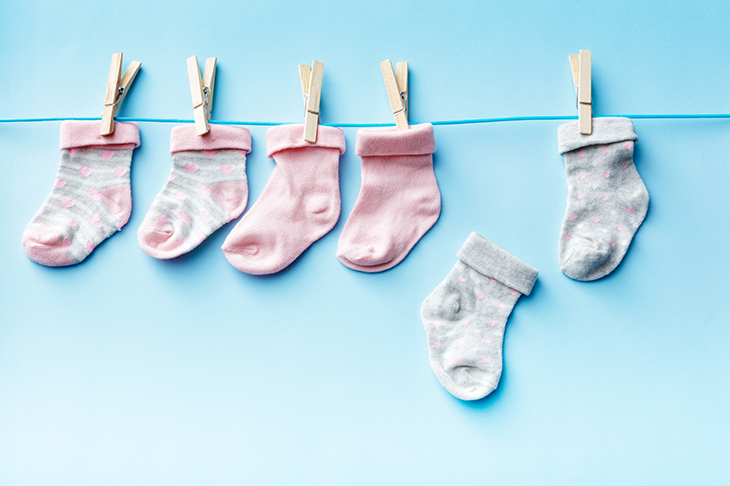OMG, the end of the decade is almost here, which means it’s time to start reflecting on what on earth has been going on. Yes, there was #Brexit and #Trump, but I’d like to suggest an alternative story which I feel also captures the prevailing mood of the past 10 years.
It is about a party that went wrong. Badly wrong. In October, a couple in Iowa set about celebrating the imminent arrival of their baby with what is known as a ‘gender reveal party’. They welded a metal cylinder to a stand, packed it full of colored powder and gunpowder, taped over the top and detonated it.
They’d used explosives in the hope of making a dramatic video for social media of the powder being sprayed into the air, which would announce the gender of their baby. Instead, the device exploded like a pipe bomb, killing a family member who was standing nearby. It eventually landed more than 300 feet away in a field.
The tale sums up for me what the past decade has really been about: a never–ending quest for likes on social media, often resulting in disaster. Instagram launched in 2010, and 10 years on, we are starting to understand what the world looks like when we decide to live out our lives in front of an insatiable audience. The answer is: pretty mad.
Parenting websites claim that the theatrical gender reveal ritual helps you ‘cope with the stress’ of having a baby. To that I say: pull the other one. Revealing a baby’s gender is just high-value social media content, as any influencer knows.
The first gender reveal party took place in America — where else? — back in 2008, when a woman called Jenna Myers Karvunidis, who once baked a cake to celebrate her goldfish’s birthday, threw a party to reveal her baby’s sex. She was concerned that her husband’s family weren’t excited enough, so devised the plan as a way to get them ‘jazzed up’ about the new baby.
Since then, expectant parents have dreamed up increasingly batty ways to announce whether they are expecting a girl or a boy, usually in a manner designed to appeal to their Instagram followers. In 2018, one American family used an alligator as the centerpiece for their party. It chomped down on a watermelon filled with blue jelly to indicate they were expecting a boy. Australians have pioneered the ‘gender reveal burnout’, where cars are fitted with special tires which produce a plume of colored smoke when the driver spins the wheels.
I had assumed the British would be too snooty for this fad but it seems not. Like wedding lists and baby showers, gender reveal parties are becoming a normal rite of passage here, too. John Lewis stocks a black ‘gender reveal’ balloon and ‘scratch-to-reveal’ gender cards. One couple I know posted a video of themselves popping a piñata filled with confetti in order to reveal to their thousands of Instagram followers that ‘it’s a boy’. Another friend ordered special cupcakes filled with pink icing because they were having a girl.
For the uninitiated, there are online guides offering extensive advice about how to host a gender reveal party. ‘The dad can drop his drawers to reveal colored boxers,’ says one (hopefully without exposing any more than that). Another guide suggests asking friends to predict the baby’s gender. After the big moment, one guest who guessed correctly is awarded a prize, ‘such as a candle or a scented soap’. And how to ensure that you — the parents — are also kept in the dark until the day of the party? ‘Take a sealed note straight from the ultrasound to the bakery.’
Having recently had an ultrasound scan, I can confirm that doctors are fully aware of these parties and will happily give you a sealed note should you require one. ‘Would you like to know the sex?’ asked the friendly woman in the hospital as she rubbed the cold jelly on my tummy. ‘No thank you,’ I replied. ‘Are you sure? Most parents do now want to find out before the birth.’ ‘Quite sure.’ I can think of few things I’d like to do less right now than host a gender reveal party, aside from live-streaming the birth, which is something people also do.
I don’t want to know because I’m superstitious and would rather wait until the baby arrives before celebrating. But I also find the hysteria about gender unnerving. I keep reading pieces about how gender is a construct and everyone should be free to decide how they choose to identify. But the advent of gender reveal parties — and their increasing popularity on social media — suggests that we are not yet willing to let go of the old gender stereotypes. If anything, we are becoming more attached to them, as we package our lives into cutesy little pictures and twee hashtags. In the vacuous, conservative world of Instagram, it’s just easier to accept that the color pink is shorthand for femininity.
Karvunidis now says she regrets inventing the gender reveal party because of what she has unleashed over the past decade. ‘I feel like the guy who invented gunpowder,’ she said in a recent interview. The family in Iowa must know what she means.
This article was originally published in The Spectator’s UK magazine. Subscribe to the US edition here.


















